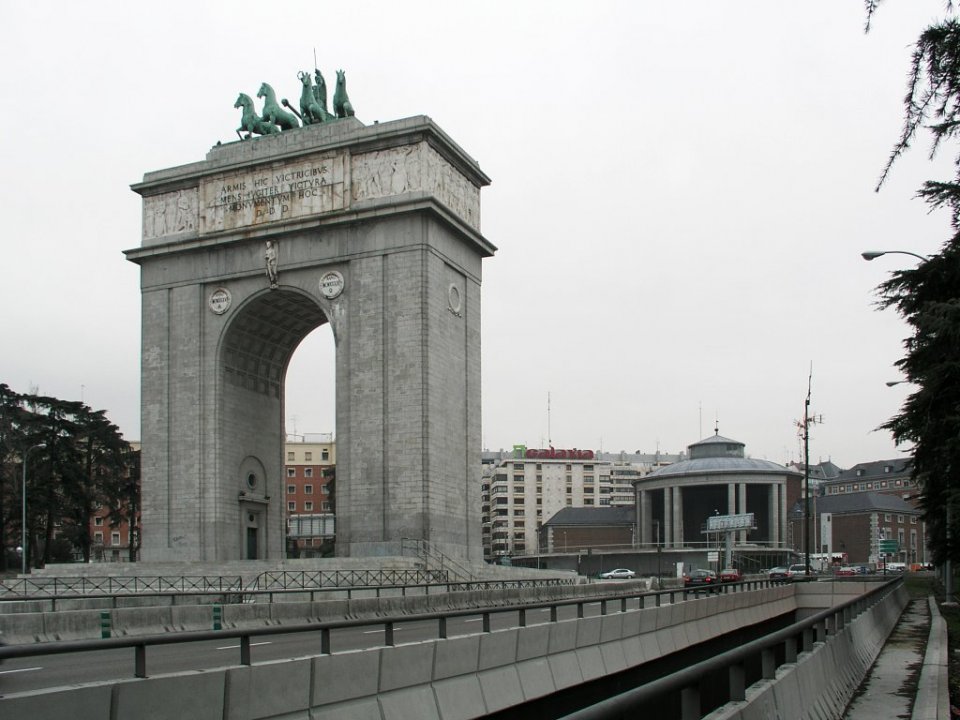Spain’s left-leaning coalition government plans to release next month an official inventory of monuments and emblems from General Francisco Franco’s dictatorship that are to be removed from public spaces, Prime Minister Pedro Sánchez announced on Wednesday.
The decision coincides with the 50th anniversary of Franco’s death. The former dictator ruled Spain with absolute control after his forces triumphed in the 1936–39 Civil War – a conflict that left hundreds of thousands dead. ALSO READ: Events to mark 50 years since Franco’s death commence, yet his legacy still divides Spain.
Speaking before the Spanish Congress, Sánchez said that before the end of November his administration would unveil ‘a complete list of Francoist symbols and elements, so they can finally be removed from our country and from our streets’.
Across Spain, traces of Franco’s nearly 40-year rule still mark the landscape — from imposing neoclassical arches to tranquil plazas that bear the names of his loyalists.
The campaign group Debería Desaparecer (‘It Should Disappear’), founded in 2022 to document what it calls illegal remnants of the dictatorship, estimates there are still more than 6,000 such symbols nationwide.
Among the most visible is Madrid’s 50-metre-high Arco de la Victoria (main image) – the Victory Arch – built in the 1950s to commemorate Franco’s fascist-backed nationalist victory in the Civil War.
Following Franco’s death on 20 November 1975, Spain began its transition to democracy. Yet a sweeping amnesty law passed in 1977 protected both regime officials and anti-Franco dissidents from prosecution, leaving many of the dictatorship’s symbols intact.
Only in recent decades has Spain begun to confront this legacy more directly. In 2007, Socialist (PSOE) Prime Minister José Luis Rodríguez Zapatero introduced the Historical Memory Law, obliging public institutions to remove Francoist iconography.
That process accelerated after Sánchez – also a socialist — took office in 2018. The next year, his government exhumed Franco’s remains from the Valle de los Caídos (Valley of the Fallen), a vast basilica near Madrid, and reburied them in a private family crypt to prevent the site from serving as a pilgrimage point for far-right sympathisers. ALSO READ: Sánchez visits Francoist mausoleum to learn about civil war exhumations.
In 2022, Spain adopted a new Democratic Memory Law to honour victims of the dictatorship and compel regional and local authorities to erase remaining Francoist symbols. ALSO READ: Senate approves law that bans support for Franco and seeks to bring ‘justice’ to victims.
The main right-wing opposition People’s Party (PP) has resisted such measures, arguing that removing Franco-era monuments is politically driven and threatens national unity. The far-right Vox party opposes all government policies that challenge the memory of Franco’s regime.
Subscribe to the Weekly Newsletter from Spain in English.
🎥 Sánchez: “Les anuncio que antes de que termine el mes de noviembre vamos a publicar en el BOE todo el catálogo de elementos y símbolos franquistas para que sean retirados de una vez por todas de nuestro país y nuestras calles”https://t.co/bJKKimZrCJ pic.twitter.com/hemQ2uPcEn
— Cadena SER (@La_SER) October 22, 2025
Click here to get your business activity or services listed on our DIRECTORY.


